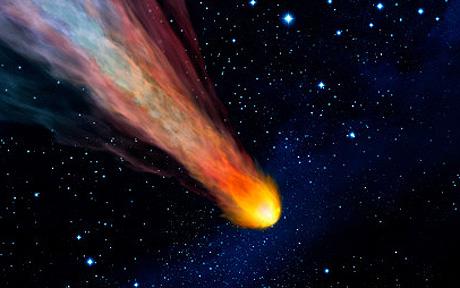
Term "spacetime" was first used by Albert Einstein in his paper on a "Special theory of relativity", in which he proposed that space and time should be combined into a single construct known as "spacetime".
Meteor is visible part of the meteoroid that enters Earth's atmosphere. Once meteor reaches the ground it is called a meteorite.
Jupiter is the largest planet within our Solar system, primarily composed of hydrogen with a small proportion of helium.
Saturn is the second largest planet in Solar system. It has unique system of surrounding rings, consisting mostly of ice particles with a smaller amount of rocky debris and dust.
Evidence suggests that planet Mars was once significantly more habitable than it is today, but whether living organisms ever existed there is still unclear.
Venus is the hottest planet in our solar system with surface temperatures of over 460 °C.
Until 2006 Pluto was considered as one of our solar system's planets, but since 2006 it is classified into new category called "dwarf planets".
Mercury is the smallest planet in our solar system, it is also planet the closest to Sun.
There are There are three main types of telescopes:
* The refracting telescope which uses lenses to form an image.
* The reflecting telescope which uses an arrangement of mirrors to form an image.
* The catadioptric telescope which uses mirrors combined with lenses—either in front of the mirror or somewhere within the optical path—to form an image.
Moon is the Earth's only natural satellite and the fifth largest natural satellite in the Solar System.
Millions of people worldwide believe they have seen UFOs, and tens of thousands of UFO reports have been cataloged.
Popular phrase "Houston we have a problem" comes from the words of Commander James A. Lovell, commanding officer at the infamous Apollo 13 who during the radio transmission with NASA said: "Houston, we've had a problem".
NASA (National Aeronautics and Space Administration) was established on July 29, 1958. NASA's headquarters is located in Washington, D.C.



No comments:
Post a Comment